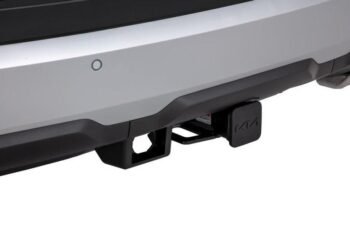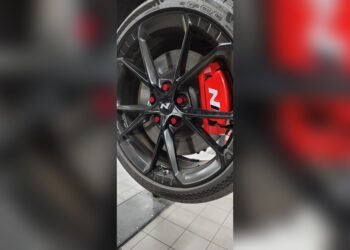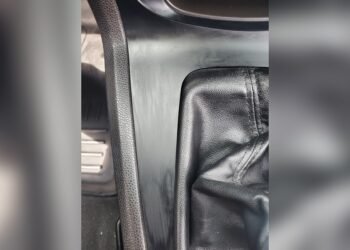Are you curious about what’s really inside your Ford’s seats? Whether you’re thinking about buying a new Ford or just want to know if those leather seats are genuine, you’re not alone.
Many drivers ask: Does Ford use real leather? The answer isn’t as simple as yes or no. Ford offers a mix of materials—from authentic leather in premium trims to high-quality synthetic options designed for durability and easy care. You’ll discover exactly which Ford models feature real leather, how to tell the difference, and why some seats might feel just as luxurious without being animal-based.
Keep reading to get the full scoop and make the best choice for your comfort and style.

Credit: www.f150forum.com
Ford Leather Options
Ford offers various leather options depending on the trim level of the vehicle. These options range from genuine leather in premium trims to synthetic materials in lower trims. Understanding these options helps buyers know what to expect inside their Ford vehicle.
Premium Trims And Leather
Higher-end Ford models feature real leather seats. These seats use genuine animal hide, providing a soft and durable surface. Leather in premium trims adds a touch of luxury and comfort. It also offers better breathability and ages well over time. Buyers can expect detailed stitching and quality finishes in these trims.
Lower Trims And Cloth Seats
Lower-level Ford trims usually come with cloth seats. These seats are made from durable fabric designed for daily use. Some lower trims use synthetic leather, called ActiveX, which looks like leather but is easier to clean. This material resists stains and wears well over time. Cloth seats offer comfort and practicality without the higher cost of leather.

Credit: www.reddit.com
Activex Synthetic Material
Ford uses ActiveX synthetic material as an alternative to real leather in many vehicles. This material offers a premium look and feel without using animal products. It suits drivers who want durability and easy maintenance. ActiveX is designed to support an active lifestyle while maintaining style and comfort.
Features Of Activex
ActiveX is a high-quality synthetic fabric made to mimic leather’s texture. It feels soft and smooth to the touch. The surface resists stains and spills, making it practical for daily use. This material does not crack or fade easily, keeping its appearance over time. ActiveX is also water-resistant, which helps protect seats from damage. It does not contain any animal-based components, appealing to eco-conscious buyers.
Durability And Maintenance
ActiveX is more durable than traditional leather in many ways. It withstands wear and tear from regular use without losing shape. Cleaning ActiveX requires only a damp cloth and mild soap. It dries quickly and does not absorb odors like real leather can. This synthetic material resists stains better, reducing the need for deep cleaning. Overall, ActiveX seats maintain their look with minimal effort.
Comparison With Real Leather
Real leather offers a unique natural texture and breathability. However, it can stain, crack, and require special care products. ActiveX looks similar to leather but is more resistant to damage. It is easier to clean and maintain over long periods. Real leather may feel warmer, while ActiveX stays cooler in hot weather. Cost-wise, ActiveX is often less expensive and more eco-friendly. Both materials have their strengths, depending on driver needs.
Identifying Real Leather
Identifying real leather can help you understand the quality of Ford’s interiors. It shows whether the material is genuine or synthetic. Real leather has unique traits that set it apart from fake leather. Knowing these traits will help you make better choices about car upholstery.
Visual Inspection Techniques
Real leather has natural, uneven grain patterns. Fake leather often looks too perfect or uniform. Look for small imperfections like pores or scars. These are signs of authentic leather. The edges of real leather are rough, not smooth or plastic-like. Check the backside; real leather shows suede fibers, unlike fake leather’s fabric backing.
Touch And Feel Differences
Real leather feels warm and soft to touch. It is flexible and changes texture with use. Fake leather feels cold, stiff, or plastic-like. Press your finger lightly; real leather wrinkles naturally. Fake leather often stays flat or bounces back quickly. The surface of genuine leather has a slightly grainy texture, while fake leather is smooth or shiny.
Common Tests For Leather Authenticity
One simple test is the water drop method. Drop a small amount of water on the surface. Real leather absorbs water slowly, creating a dark spot. Fake leather repels water or causes it to bead up. Another test is the smell. Real leather has a distinct, natural scent. Fake leather often smells like plastic or chemicals. Finally, try the scratch test gently. Real leather shows slight marks that disappear. Fake leather may peel or stay unchanged.
Leather In Ford Models
Ford offers various leather options across its truck and SUV lineup. The brand balances quality, comfort, and durability in its interiors. Some trims feature genuine leather, while others use synthetic materials.
Ford focuses on creating a premium feel without compromising practicality. Leather seats add a touch of luxury and are easier to clean than cloth. Let’s explore the different types of leather used in Ford models.
King Ranch Leather History
The King Ranch trim is famous for its unique leather. It uses high-quality, real leather sourced from select tanneries. This leather has a distinctive look and feel that matches the rugged style of the truck.
King Ranch leather has been a Ford staple for many years. It features rich textures and natural grain patterns. This leather ages well, gaining character over time with proper care.
Lariat Leather Features
Lariat trims include leather seats that offer comfort and style. These seats use genuine leather but may combine it with synthetic materials in less visible areas. The leather is soft and durable, designed for daily use.
Ford ensures Lariat leather seats have good breathability and support. They are often heated and ventilated for added comfort. Stitching and design detail enhance the interior’s upscale look.
Use Of Faux Leather In Recent Models
Ford uses faux leather in many recent models, especially in mid-level trims. This material mimics real leather’s appearance but costs less and resists stains better. It suits active lifestyles and easy maintenance.
Known as ActiveX™, Ford’s synthetic leather offers durability and comfort. It contains no animal products and cleans easily. Buyers seeking a leather look without real leather often choose this option.
Ford’s Interior Material Trends
Ford’s interior materials have evolved to meet changing customer needs and environmental concerns. Many models now use a mix of materials to balance comfort, style, and durability. The choice of materials depends on the trim level and price point.
Shift To Synthetic Materials
Ford increasingly uses synthetic materials in their interiors. These materials look like leather but cost less and resist wear better. ActiveX™, for example, is a popular synthetic option. It offers a soft, leather-like feel without animal products. This makes cleaning easier and improves durability over time. Many mid-range and lower trims feature these synthetics instead of real leather.
High-end Vs Standard Interior Materials
High-end Ford models often include genuine leather seats. These provide a premium look and feel that many buyers want. The leather is usually limited to seating surfaces. Other parts use vinyl or fabric to reduce cost. Standard models rely more on cloth or synthetic materials. This keeps prices lower and suits everyday use. The difference in materials clearly marks the trim levels.
Customer Experiences
Customer experiences reveal much about Ford’s use of leather in their vehicles. Buyers share honest opinions on leather quality and durability. Their feedback helps others decide on Ford’s interior materials. Real user insights show the strengths and weaknesses of Ford’s leather options.
Leather Quality Feedback
Many customers appreciate the soft feel of Ford’s leather seats. Some report a genuine leather texture, especially in higher trim models. Others say the leather can feel thinner or less luxurious in mid-range trims. Several users note good stitching and craftsmanship on leather surfaces. A few mention synthetic blends that look like leather but differ in feel.
Durability Reports
Ford leather seats often hold up well under daily use. Some customers mention minor wear after a few years. Scratches and creases appear but do not always affect comfort. A number of drivers praise leather for easy cleaning and resistance to stains. Others warn that lower-grade leather can crack in extreme weather.
Replacement And Warranty Cases
Ford offers warranties covering leather seat defects in many models. Customers share mixed results on replacement claims. Some find the process smooth and quick. Others face delays or restrictions, especially for wear-related damage. Ford dealers generally assist with repairs, but coverage varies by vehicle age and condition.
Ford Leather Vs Competitors
Ford offers leather seats mostly in their higher trim models. These leather seats combine comfort and style, appealing to many buyers. Yet, comparing Ford leather to competitors reveals some key differences. Understanding these differences helps buyers choose the best option for their needs and budget.
Comparison With Other Brands
Ford uses real leather on premium seats, mainly in Lariat and King Ranch trims. Some areas, like seat sides, may use synthetic materials. Other brands, like Toyota and Honda, also offer genuine leather but often cover the entire seat surface. Luxury brands such as BMW and Mercedes-Benz typically use higher-grade leather with more detailed finishing. Ford’s leather is durable and practical, designed to handle daily use. It may not have the same softness or aroma as luxury brands. For many drivers, Ford’s leather balances quality and functionality well.
Value And Pricing Considerations
Ford’s leather seats come at a reasonable price compared to luxury competitors. Customers pay less for leather in Ford models than in premium brands. This makes leather more accessible for mid-range buyers. Some competitors charge significantly more for full leather interiors. Ford’s use of mixed materials helps keep costs down. Buyers get a leather feel without a high price tag. For those seeking full luxury leather, Ford may not be the top choice. For everyday comfort and style, Ford offers strong value in leather seating.

Credit: www.reddit.com
Frequently Asked Questions
Does Ford Have Real Leather Seats?
Ford offers real leather seats primarily on premium trims like Lariat, King Ranch, and Platinum models. Lower trims use cloth or synthetic materials such as ActiveX. Only seating surfaces often feature genuine leather, while other parts use high-quality vinyl or faux leather.
Does Ford Use Fake Leather?
Ford uses both real leather in premium trims and synthetic materials like ActiveX in others. ActiveX is durable, stain-resistant, and animal-free.
How To Tell If A Car Has Real Leather?
Check the leather edge for suede fibers to confirm real leather. Scratch gently; real leather feels soft, not plastic-like. Look for trusted labels.
When Did Ford Stop Using Real King Ranch Leather?
Ford stopped using real King Ranch leather mainly after 2021, shifting to synthetic ActiveX materials in most trims.
Does Ford Use Real Leather In All Its Car Models?
Ford uses real leather mainly in premium trim levels, while lower trims often have cloth or synthetic seats.
Conclusion
Ford uses real leather mainly in its higher-end trims. Many models feature synthetic materials like ActiveX for durability. Real leather feels soft and shows suede fibers underneath. Synthetic seats resist stains and clean easily. Knowing your trim helps identify the material used.
Choosing between leather and synthetic depends on your needs. Both offer comfort and style in Ford vehicles. This mix keeps options open for different budgets.

















